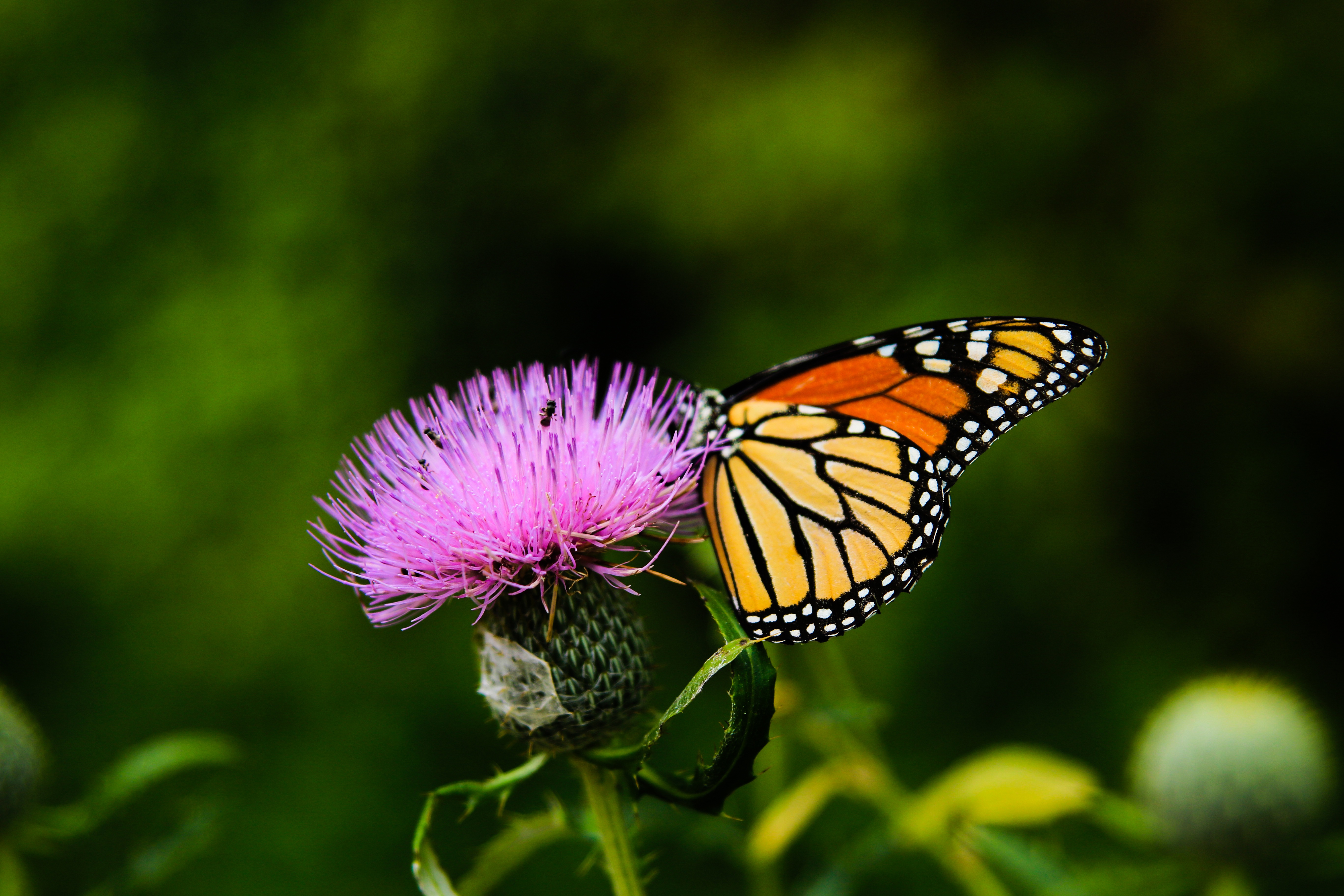A threatened butterfly could be helped after scientists cracked the secret of how its brain works.
Researchers believe they have discovered how the internal compass is used by the monarch butterfly to determine their south-west flight when they migrate each autumn.
Scientists have never understood how the monarch’s brain receives and processes information about its location and where they should fly.
But now it is hoped this discovery will help scientists understand how they navigate and locate their food.
Each year monarchs turn their orange, black and white-mottled wings toward the Rio Grande and migrate over 2,000 miles to the warmer climbs of central Mexico.
Thie journey is repeated instinctively by generations and has continued even as monarch numbers have plummeted due to loss of their sole food source – the milkweed plant.
Study lead author Dr Eli Shlizermanof, joined with colleagues at the University of Michigan and the University of Massachusetts to show how the monarch’s compass is organised within its brain.
Dr Shlizermanof, who is an assitant professor at the University of Washington in the US, said: “Their compass integrates two pieces of information – the time of day and the sun’s position on the horizon — to find the southerly direction.
“We wanted to understand how the monarch is processing these different types of information to yield this constant behaviour – flying south-west each autumn.”
Monarchs use their large, complex eyes to monitor the sun’s position in the sky, but the sun’s position is not enough to determine direction.
Each butterfly must also combine that information with the time of day to know where to go.
Like most animals, including humans, monarchs possess an internal clock based on the rhythmic expression of key genes.
This clock maintains a daily pattern of physiology and behaviour and in the monarch butterfly, the clock is centred in the antennae.
Dr Shlizerman added: “We created a model that incorporated this information — how the antennae and eyes send this information to the brain.
“Our goal was to model what type of control mechanism would be at work within the brain, and then asked whether our model could guarantee sustained navigation in the south-west direction.”
Based on their model, it also appears that during course corrections monarchs do not simply make the shortest turn to get back on route.
Their model includes a unique feature – a separation point that would control whether the monarch turned right or left to head in the south-west direction.
Dr Shlizerman added: “The location of this point in the monarch butterfly’s visual field changes throughout the day.
“And our model predicts that the monarch will not cross this point when it makes a course correction to head back south-west.
“In experiments with monarchs at different times of the day, you do see occasions where their turns in course corrections are unusually long, slow or meandering.
“These could be cases where they can’t do a shorter turn because it would require crossing the separation point.
“And when that happens, their compass points north-east instead of south-west. It’s a simple, robust system to explain how these butterflies – generation after generation – make this remarkable migration.”
The findings were published in the journal Cell Reports. [accordions handle=”arrows” space=”no” ]
[accordion title=”” ][/accordion]
[/accordions]




